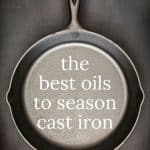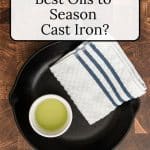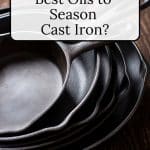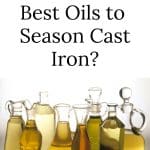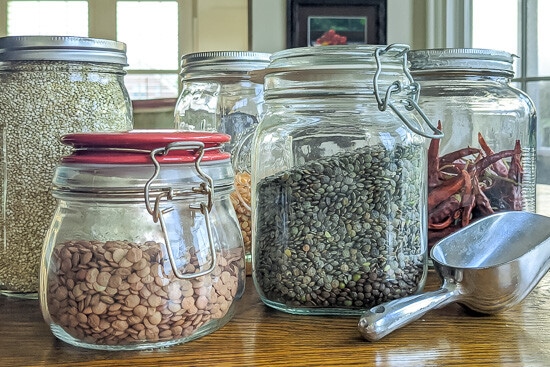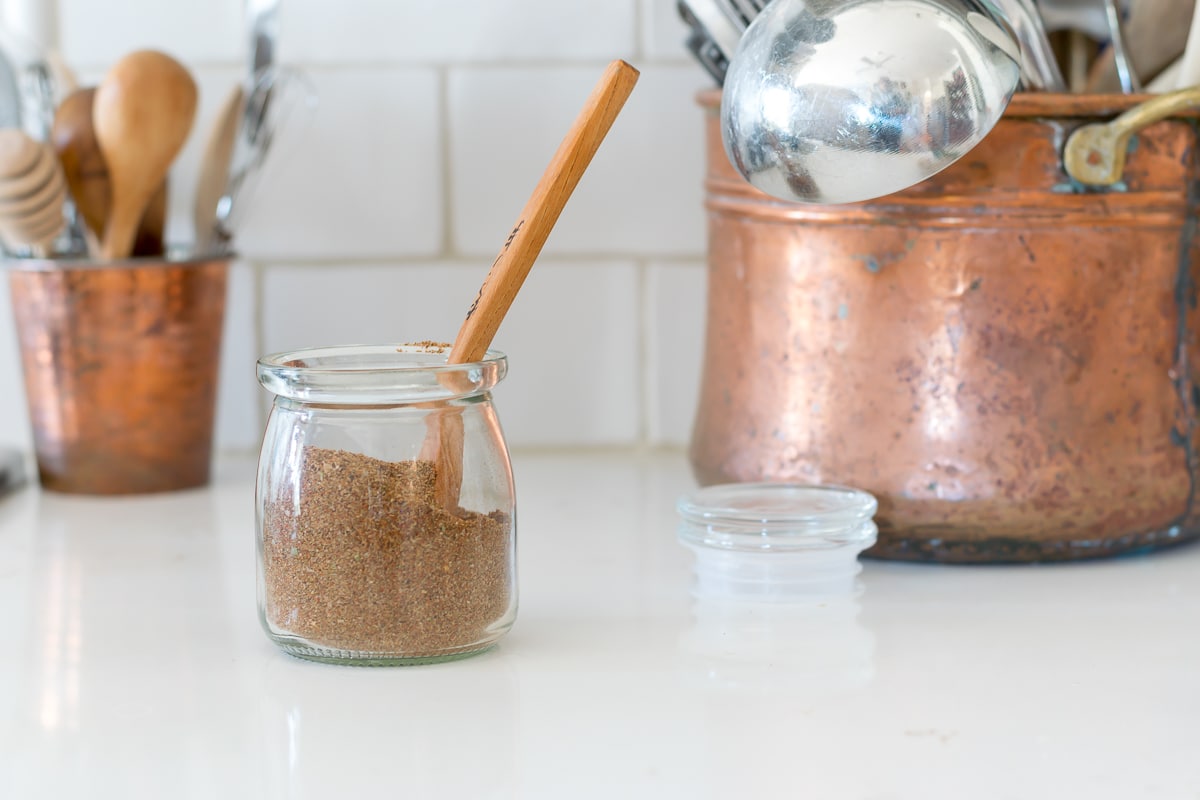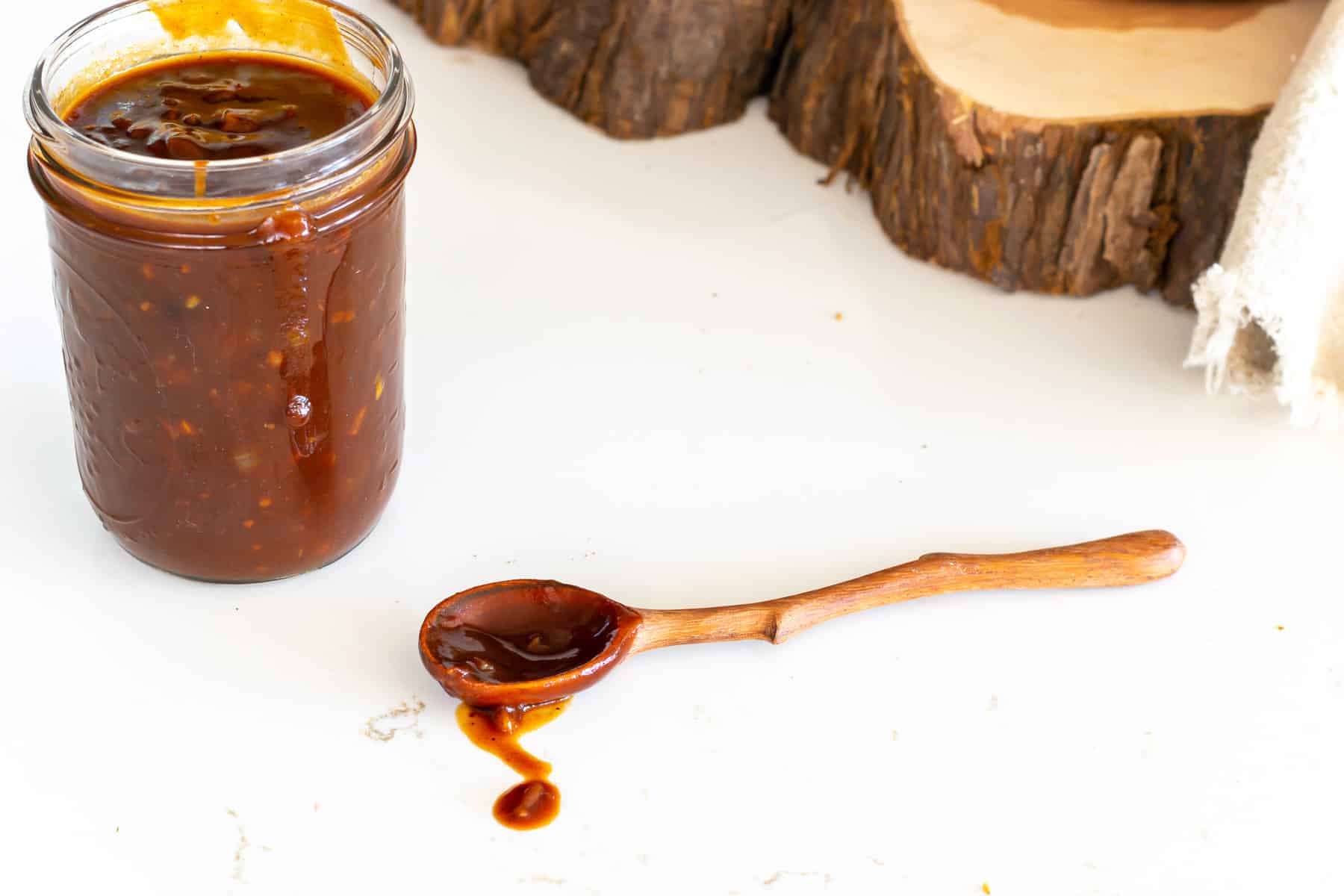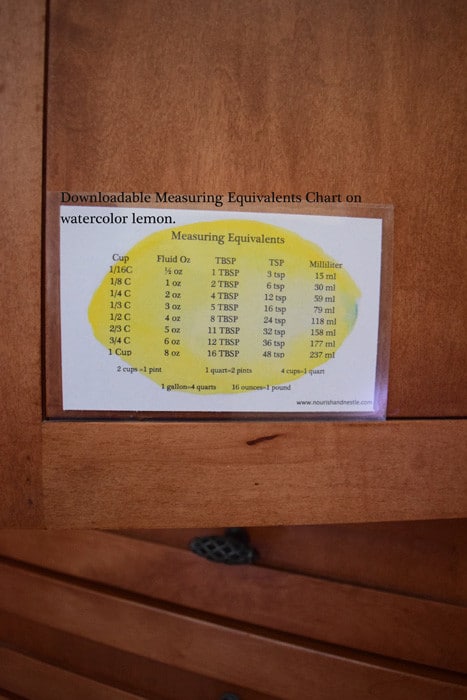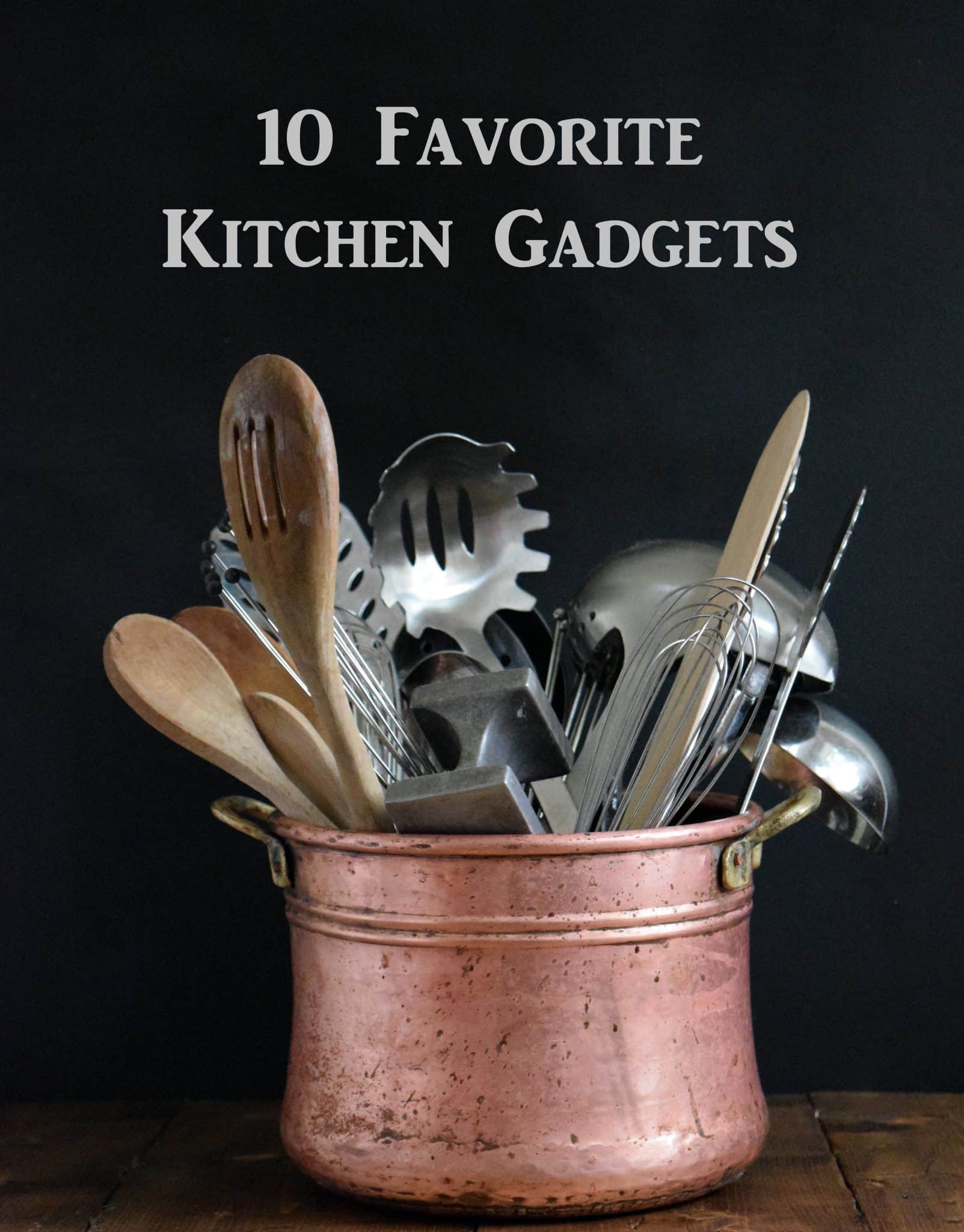The Best Oils to Season Cast Iron
Cast iron has long been my preferred cookware when I need a non-stick surface, whether it is my cast iron skillets or Dutch oven. But, keeping it appropriately seasoned is imperative in maintaining the non-stick surface. In a previous post, we discussed how to clean rusted cast iron. This post goes in-depth on the best oils to season cast iron. Armed with both of these posts, you can maintain your cast iron for years.
Cast Iron cookware offers a variety of benefits as a non-stick cooking surface. The most important benefit to me is that it provides a non-stick cooking surface without added harmful chemicals like PTFE (Teflon) and PFOA. And, with cast iron, you don’t have to worry about scratching the surface like with other synthetic non-stick surfaces.
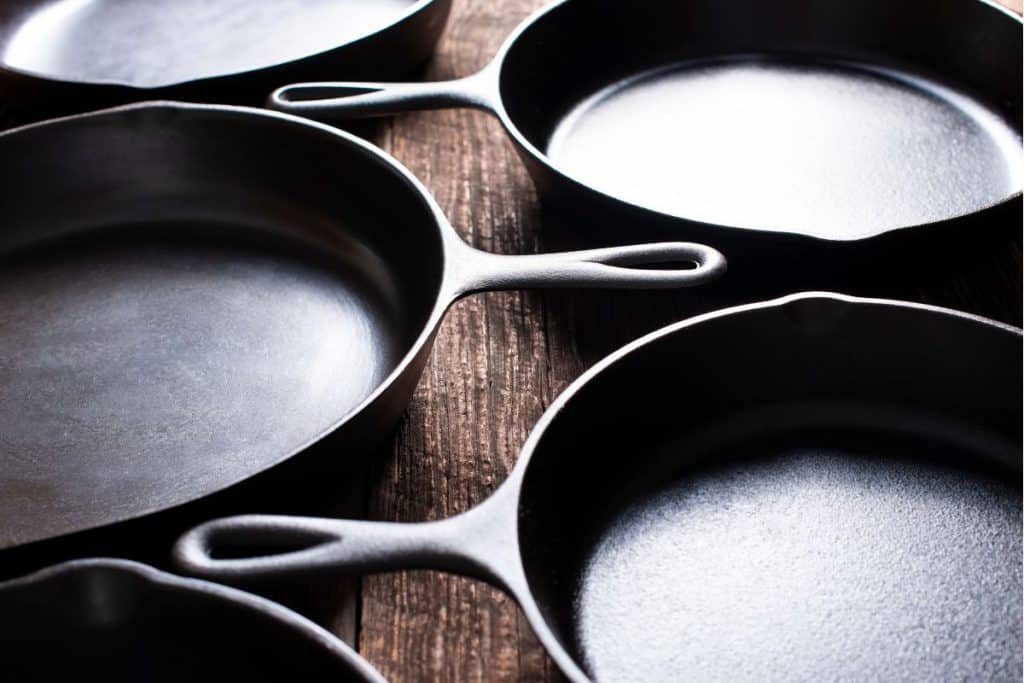
Table of Contents
Cooking with cast iron can increase the iron content in your food. While the amount of iron transferred can vary, it’s generally more significant when cooking acidic foods like tomato sauce.
Cast iron cookware is generally a lower-cost alternative to non-stick pans. It retains heat remarkably and distributes it evenly. Cast iron cookware is highly durable and long-lasting. It also boasts the versatility of going from oven to stovetop to campfire!
All that said, cast iron does have a small bit of maintenance that often puts cooks off.
But, I’m here to tell you that the maintenance is no big deal and well worth cast iron’s benefits.
Some of these links may be Amazon affiliate links and I may earn a small commission from the sale of these products to help defray the costs of operating this site, but the price you are charged is not affected. You can see my full disclosure policy here.
the importance of seasoning cast iron.
‘Seasoning Cast Iron’ refers to coating it with a thin layer of oil and heating it until it forms a protective, non-stick layer.
Once correctly seasoned, cast iron can keep its ‘non-stick’ property for years, depending on its use and maintenance. If you use your cast iron cookware often and properly maintain it, you may only need to do a full seasoning once a year or less. Each time you cook with oil or fat in your cast iron pan, you add to its seasoning.
If you observe that your cast iron pans are becoming sticky, appearing dry or dull, or you notice any rust or bare metal, it’s time to re-season them. To keep your cookware in good condition, it is important to re-season it after cooking acidic foods such as vinegar-based sauces or tomatoes. Restoring the protective layer can help prevent damage and prolong the life of your cookware.
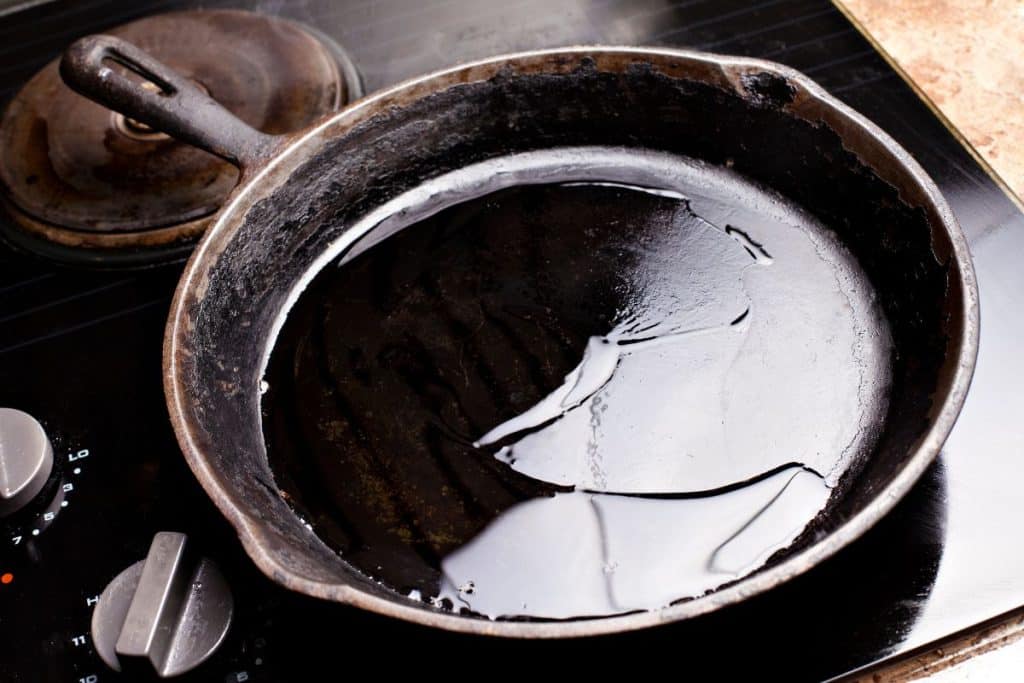
To maintain your cast iron cookware between full seasonings, clean it properly after each use. This typically means wiping it out. While it is still warm, use a little coarse salt if necessary to remove stuck-on bits and dry it thoroughly to prevent rust.
After cleaning, apply a light layer of oil and heat it briefly on the stove to help maintain the seasoning and keep the pan in good shape. Seasoning cast iron is an ongoing process, and a well-used pan’s surface will improve over time as layers of seasoning build up.
how does oil season cast iron?
Seasoning cast iron involves coating it with a light layer of oil and then heating it to a high temperature. This process transforms the oil into a protective, non-stick layer through a chemical reaction known as polymerization and further thermal decomposition through a process called carbonization.
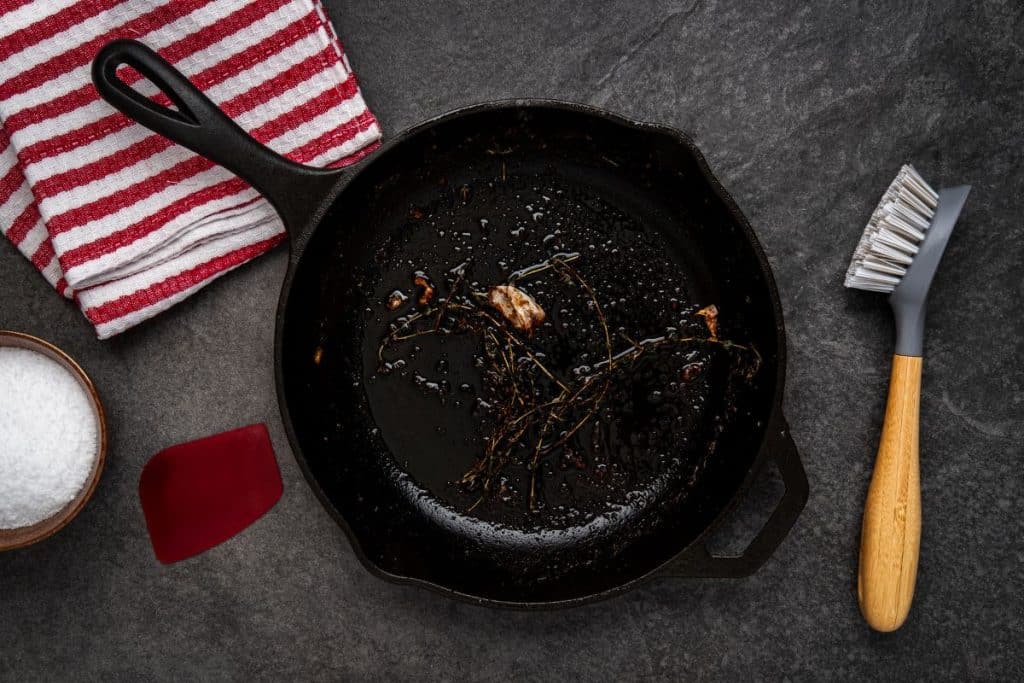
cast iron seasoning process, step-by-step
- Clean your Pan: Make sure the pan is clean and dry. Use a scraper or salt to dislodge any bits of food. If your cast iron has rusty spots or the previous seasoning is flaking off, you’ll want to do a deep clean. This post will walk you through restoring rusty or neglected cast iron.
- Apply the Oil: A thin layer of oil (usually vegetable-based oil, see below for suggested oils) is applied to the entire surface of a clean cast iron pan. This includes the outside and the handle.
- Heat the Pan: The oil-coated pan is heated above the oil’s smoke point. This can be done in an oven or on a stovetop. The heat causes the oil to break down and start to smoke. When seasoning a cast iron pan, typically heat your oven to around 450-500°F (232-260°C). To create a durable seasoning layer, you need to use a high enough temperature that exceeds the smoke point of most oils and starts the polymerization process.
- Polymerization: Keep your cast iron pan in the hot oven for one hour. When the oil is exposed to high heat, it reacts with oxygen in the air and undergoes a process called polymerization. This causes the individual molecules of the oil to bond together, creating a network of larger molecules that form a plastic-like layer on the cast iron.
- Carbonization: If the heat is high enough, the polymerized oil will further break down into a thin layer of carbon, which is even more non-stick and durable.
- Cooling Down: After the pan has been heated for an hour, it is allowed to cool. The result is a hard, non-stick surface part of the pan itself.
- Repeat: This process (steps 2-7) should be repeated multiple times for a more enduring non-stick surface.
This seasoning layer protects the iron from air and moisture, preventing rust, and provides a non-stick surface for cooking. As you cook with oil or fat in a pan, the seasoning will strengthen and last longer with each use.
Therefore, the term “seasoning” for cast iron refers to the initial process of building the protective layer and the ongoing maintenance and improvement of this layer through cooking.

what makes an oil good for seasoning cast iron?
The ability of an oil to polymerize well and therefore create a good non-stick surface on a cast iron depends on a few factors:
- Smoke Point: To prevent breakdowns due to high temperatures, it is recommended to use oils with high smoke points that can undergo polymerization. Oils with low smoke points may not reach the necessary temperature for proper polymerization. This results in a sticky or gummy layer rather than a hard, slick one.
- Fatty Acid Composition: The type and composition of fatty acids in oil can also influence how well it polymerizes. Polyunsaturated oils like flaxseed oil are excellent for polymerization. On the other hand, oils with high proportions of saturated fats, like coconut oil, or monounsaturated fats, like olive oil, are not as well-suited to polymerization.
- Drying vs. Non-Drying Oils: This concept refers to the ability of the oil to harden into a tough film after exposure to air over time. Flaxseed oil is a type of drying oil that has the ability to harden when it comes into contact with air. This makes them useful in paint, varnish, and cast iron pan seasoning. Non-drying oils, like olive oil, don’t harden in the same way and are thus less effective for creating a durable seasoning layer.
these are the best oils for seasoning cast iron
flaxseed oil
Many feel this is the best seasoning oil because it dries hard and is very durable. It is also a food-grade oil, meaning it is safe to cook. However, it’s also one of the most expensive options. Additionally, I’ve read that some find certain brands of flax oil are more likely to flake off than others.
grapeseed oil
This oil has a high smoke point, making it great for seasoning. It’s also relatively affordable and easy to find. While grapeseed oil may not form quite as hard or durable a layer as flaxseed oil due to its lower concentration of polyunsaturated fats, it can still create a good non-stick surface. Another advantage of grapeseed oil is that it’s typically less expensive and more readily available than flaxseed oil.
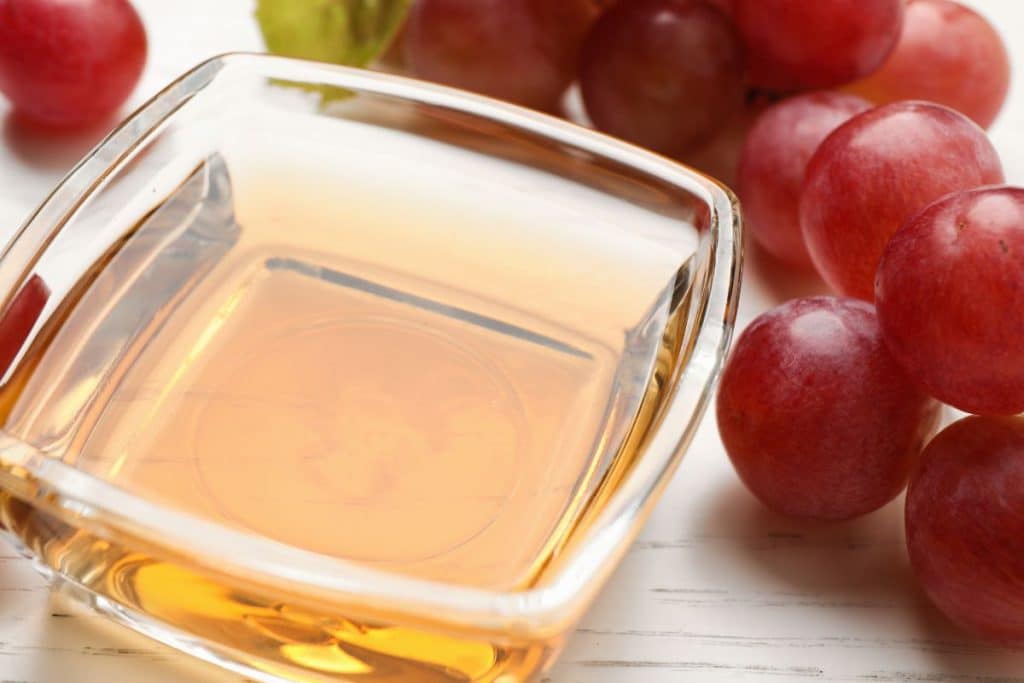
canola oil
This is a very popular choice for seasoning cast iron. It’s inexpensive, has a relatively high smoke point, and is widely available.
vegetable/soybean oil
Soybean and vegetable oil are commonly used in cast iron oil seasoning. It’s cheap, readily available, and has a high smoke point.
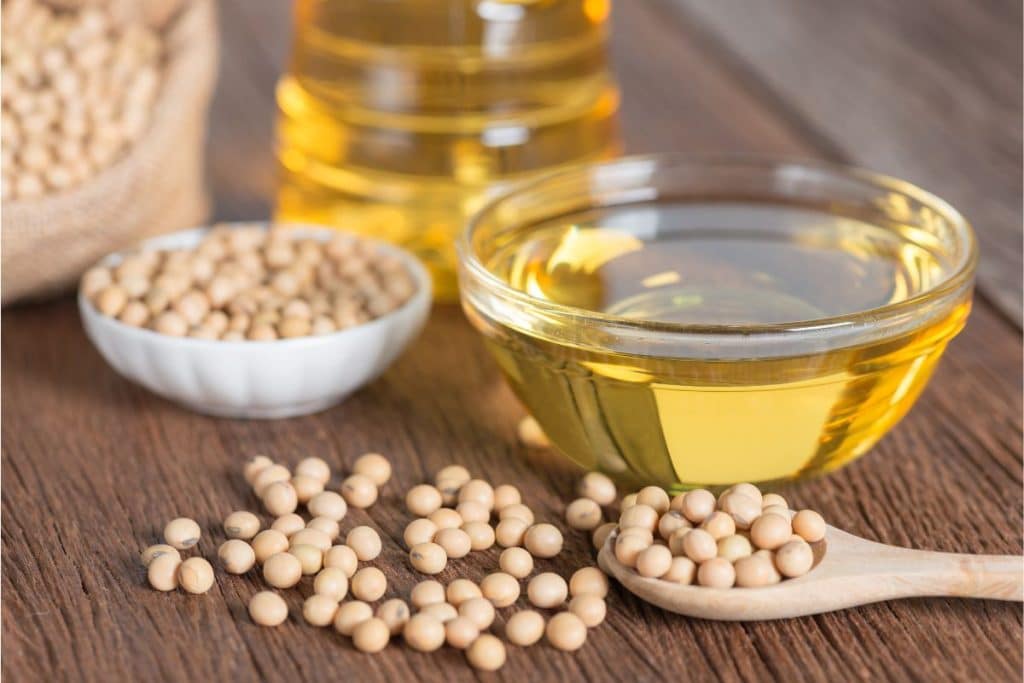
sunflower oil
This oil has a high smoke point and is a good option for seasoning.
peanut oil
It has a high smoke point and is often used for frying, but it’s also great for seasoning cast iron. However, be aware of potential allergies if you plan to cook for others.
avocado oil
The refined versions of Avocado have a high smoke point, making it a good choice for seasoning cast iron. It isn’t as high in polyunsaturated fats as flaxseed or grapeseed, but it is still a good option.
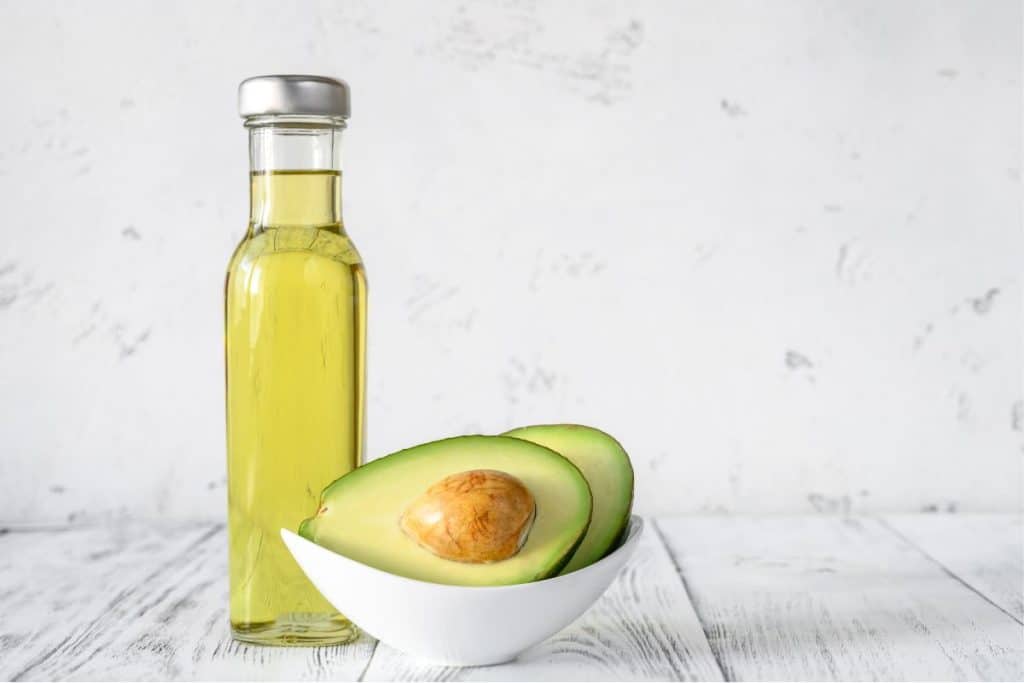
beeswax
To season a cast iron pan, combine beeswax and cooking oil with a high smoke point, such as grapeseed or canola oil, to create a seasoning paste. Thinly spread the paste over the cast iron pan and heat it to start the polymerization process. This creates a smooth and consistent layer of seasoning that adheres well to the pan’s surface.
palm oil
This oil has a relatively high smoke point which allows it to withstand the high temperatures necessary for seasoning. It’s a semi-drying oil, which means it has a moderate ability to oxidize and polymerize, forming a protective, non-stick layer on the pan. However, it might not provide as durable and non-stick a surface as some other oils.
I’ve also had good luck with the Crisbee Stik. The packaging makes delivering a light coat of oil quick and easy. They are made from a combination of beeswax and palm oil.
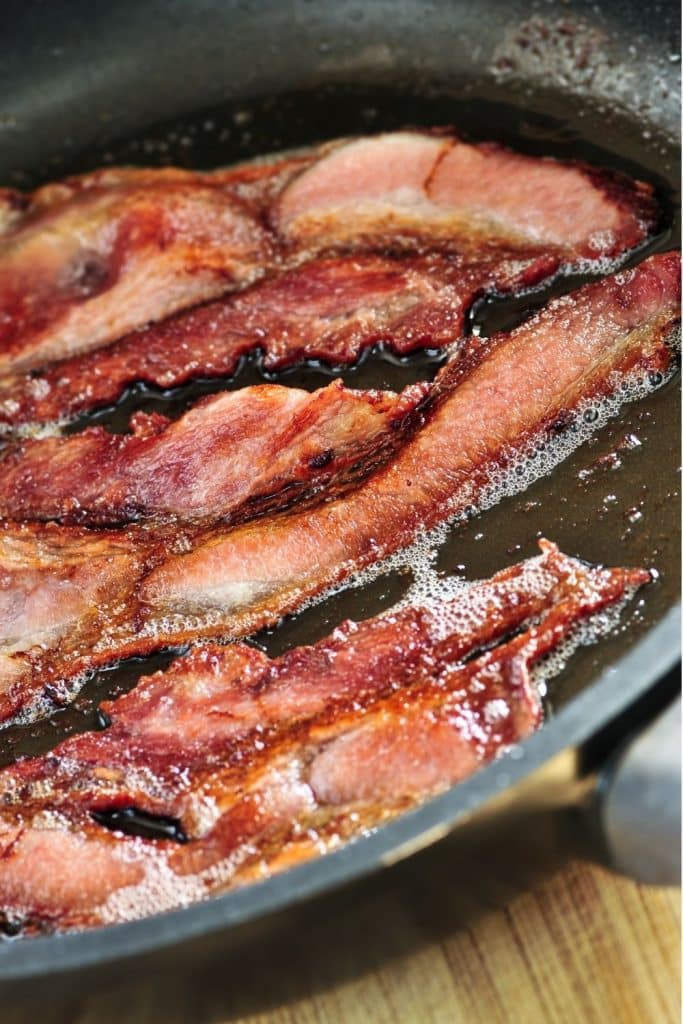
about bacon grease
Seasoning a cast iron pan with bacon grease is a popular and effective choice for many cooks. The high-fat content of the grease creates a non-stick surface and adds a delicious flavor to subsequent meals.
Use the rendered grease from recently cooked bacon to coat the skillet before heating it further to create the seasoning while preparing a meal. Keep in mind that bacon grease has a lower smoke point than other oils, but it can still achieve polymerization. Remember, animal fats like bacon grease can go rancid over time if not stored properly. As such, using fresh grease is important to avoid any unpleasant flavors in your food.
oils to avoid when seasoning cast iron
Butter: Butter isn’t a good choice for seasoning because it’s not 100% fat. It contains water and milk solids that can burn at high temperatures, resulting in a sticky and uneven seasoning.
Olive Oil: Extra virgin olive oil has a low smoke point, which means it can start to smoke and burn at the temperatures required to season a cast iron pan. This can leave a sticky residue and not provide a good non-stick surface.
Coconut Oil: Coconut oil has a lower smoke point and may not polymerize as well as other oils, which can result in a less effective seasoning.
Sesame Seed Oil: This oil has a low smoke point and is more expensive than many other options.
Nut Oils (like Walnut oil, Almond oil): While some nut oils, like peanut oil, have a high smoke point, others, like walnut or almond oil, do not. Nut oil tends to be expensive and is better used for finishing or flavoring dishes after cooking.
Flavored or Infused Oils: Avoid using oils with added ingredients for seasoning, as high heat may cause them to produce a sticky residue or an unpleasant taste.
Bookmark this page or pin the following image to refer to this post on The Best Oils to Season Cast Iron in the future.
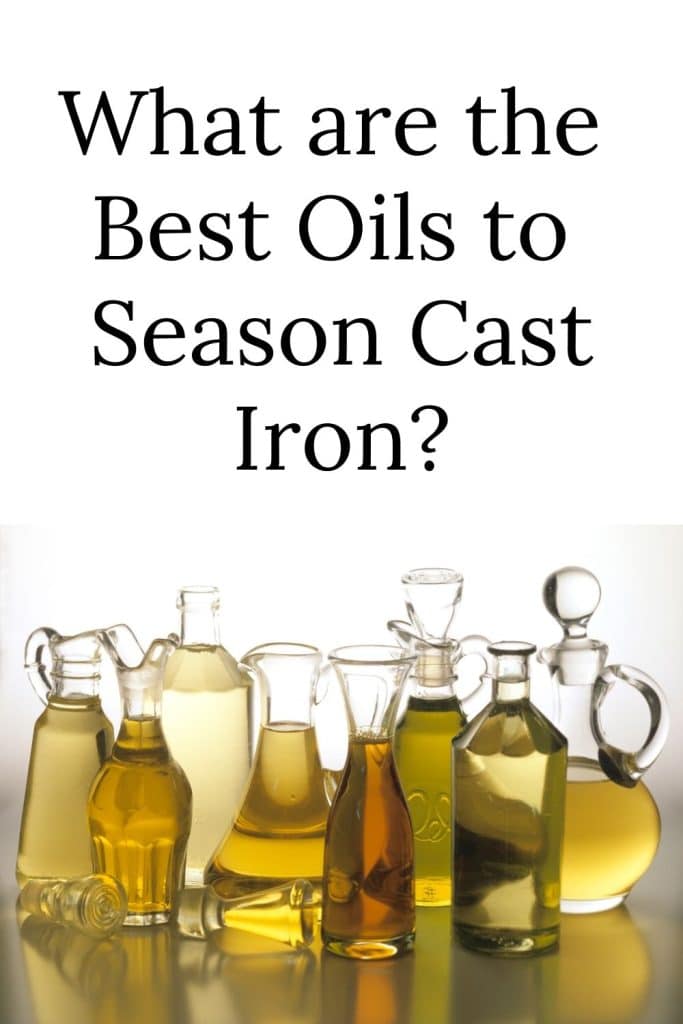
Thanks so much for spending a few minutes of your busy day with me!
To ensure you don’t miss future content, pop your email in the pale green box on the right or click here. I usually send one email weekly, so I won’t inundate your inbox. I’m sensitive to an overflowing email inbox!
We will only use your email address to send you emails, no more than 1-2 weekly. In addition, you will have access to my growing library of knit & crochet patterns and other printables. Check back often as this library will continue to grow. You can unsubscribe anytime by emailing me or clicking on the “unsubscribe” link at the bottom of all emails.
And you can access many of the products I refer to on my Nourish and Nestle Amazon Page. You can access it here.
So, if you’d like to participate in the ‘subscriber benefit’ action, simply subscribe to Nourish and Nestle here or use the form on the right sidebar. It’s slightly towards the top.
I have sent all my subscribers the link to the Subscriber Benefits Library. If you missed it or misplaced it, let me know.
Until next time…



